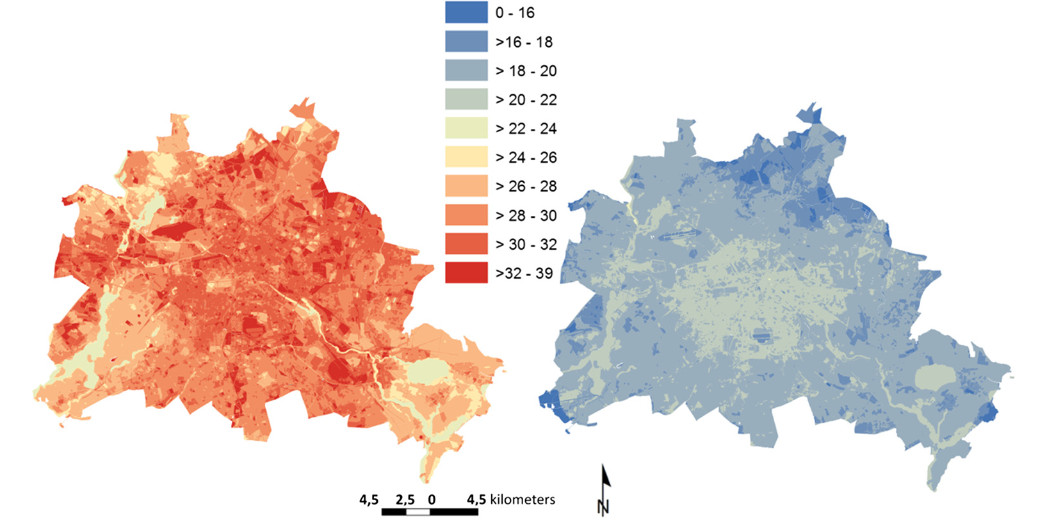
Heat Stress
The Heat Stress Index is a vital tool for climate protection, as it quantifies the impact of heat on both the population and the environment. It plays a key role in identifying vulnerable groups and developing targeted measures to mitigate heat, such as creating shade-providing urban greenery or implementing cooling strategies in heat-prone areas. By analyzing heat stress, cities can respond more effectively to climatic changes, implement preventive strategies, and enhance community resilience.
In addition to protecting public health, the Heat Stress Index supports urban planning by identifying hotspots that require immediate attention, enabling the prioritization of interventions like greening, water features, or reflective surfaces. These measures not only reduce urban heat but also contribute to biodiversity and improved air quality. Ultimately, the use of the Heat Stress Index ensures a holistic approach to urban climate adaptation, improving the health, well-being, and overall quality of life of urban residents.